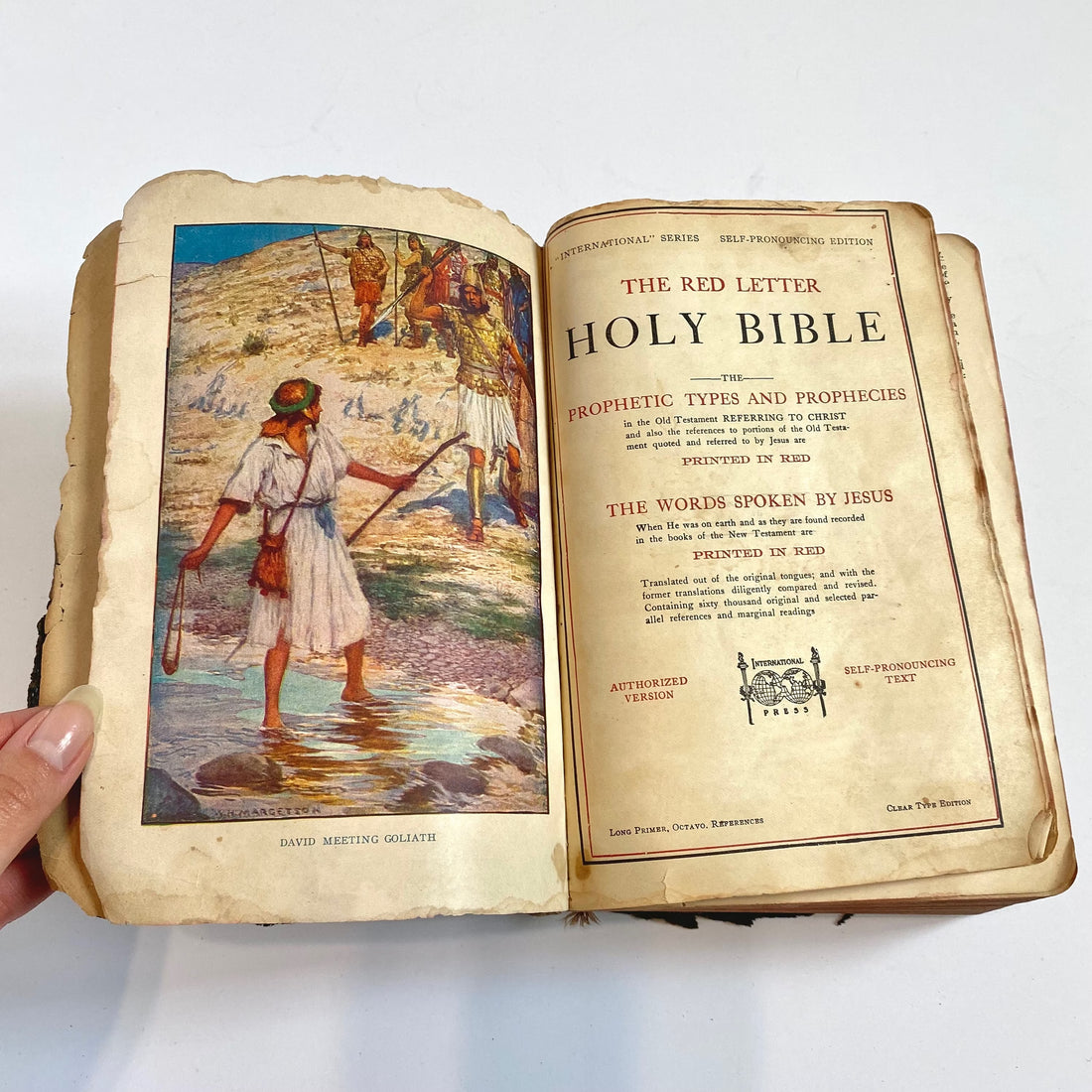The history of the illustrated vintage Bible is a fascinating journey that spans centuries, reflecting not only the religious significance of the Bible but also the evolution of art, printing technology, and cultural changes. Here's a brief overview of this history:
-
Medieval Manuscripts (4th - 15th century):
- The earliest illustrated Bibles were hand-copied manuscripts produced by monks and scribes. These illuminated manuscripts featured intricate illustrations and illuminations, often depicting biblical scenes and figures.
- Notable examples include the Lindisfarne Gospels and the Book of Kells, both of which are richly decorated Gospel books containing beautiful illustrations and ornate calligraphy.
-
The Gutenberg Bible (15th century):
- Johannes Gutenberg's invention of the printing press in the mid-15th century revolutionized the production of Bibles. The Gutenberg Bible, also known as the 42-line Bible, was one of the first major books to be printed using movable type.
- While it lacked elaborate illustrations, it marked the beginning of mass-produced Bibles, making them more accessible to a wider audience.
-
Renaissance Bibles (16th - 17th century):
- During the Renaissance, there was a renewed interest in classical art and literature. This period saw the production of elaborately illustrated Bibles, often featuring detailed engravings, woodcuts, and elaborate borders.
- The "Biblia Sacra" by Antonio Salamanca and the Geneva Bible are examples of Renaissance-era illustrated Bibles.
-
The King James Version (17th century):
- The publication of the King James Version (KJV) in 1611 marked a significant moment in the history of the English Bible. While the KJV itself did not feature many illustrations, it became a standard text for centuries to come.
-
Victorian Era Bibles (19th century):
- The 19th century saw a resurgence of interest in illustrated Bibles, particularly during the Victorian era. These Bibles often featured intricate engravings and illustrations, catering to the tastes of the era's middle-class readers.
- Prominent examples include the "Dore Bible," featuring Gustave Doré's iconic illustrations, and the "Holman Family Bible."
-
20th Century and Beyond:
- Advances in printing technology and mass production continued to influence the production of illustrated Bibles in the 20th century. Many publishers released Bibles with a wide range of illustrations, from traditional artwork to contemporary designs.
- Additionally, the advent of digital technology in the late 20th century allowed for the creation of multimedia and interactive Bibles.
-
Modern Illustrated Bibles:
- In the 21st century, illustrated Bibles continue to evolve, with various editions catering to different tastes and audiences. Some modern illustrated Bibles incorporate photography, digital art, and multimedia elements to engage readers in new ways.
The history of the illustrated vintage Bible reflects the enduring influence of the Bible on Western culture and the evolving ways in which people have sought to engage with its text through art and illustration. It also highlights the impact of technological advancements on the production and distribution of religious texts.


